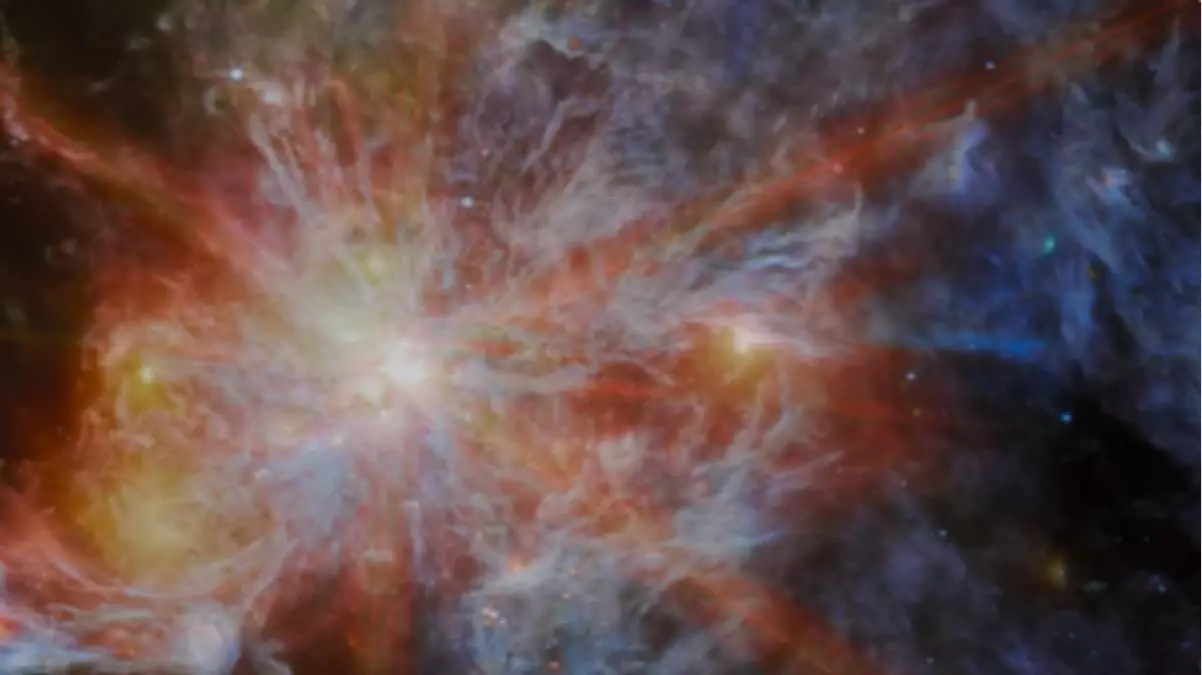The ongoing voyage of discovery propelled by the James Webb Space Telescope (JWST) has taken an exhilarating turn, as researchers have identified five potential galaxies that may date back to a mere 200 million years after the Big Bang. These extraordinary finds are situated approximately 13.6 billion light-years away, presenting a tantalizing opportunity to enrich our comprehension of the universe’s formative years. If the findings, currently under preliminary review and available on the arXiv preprint server, hold up to further scrutiny, they could signal a paradigm shift in our understanding of galaxy evolution.
The groundbreaking discoveries arise from the ambitious Galactic Legacy Infrared Midplane Survey Extraordinaire (GLIMPSE) project, a complex investigation aimed at exploring the cosmic landscape through infrared technology. While the Hubble Space Telescope has long been a reliable tool for observing distant celestial bodies, it is limited to specific wavelengths of light. In contrast, JWST specializes in infrared light detection, which allows it to pierce through cosmic dust and unveil galaxies that existed during an epoch when the universe was just beginning its expansion.
This endeavor heavily relied on gravitational lensing, a key concept derived from Einstein’s general relativity, which predicts how massive objects can warp space-time and magnify the light from more distant objects. In this instance, the galaxy cluster Abell S1063 acted as a cosmic lens, enabling scientists to glimpse these ancient formations that would otherwise remain hidden in the vast expanses of space.
If validated, these newfound galaxies hold the potential to redefine existing theories related to galaxy formation and evolution, particularly concerning the rapid assembly of matter during the early universe. Current evidence suggests that these discoveries could predate the previously oldest known galaxy, JADES-GS-z14-0, by around 90 million years. What makes these candidates even more intriguing is their spatial proximity; their clustering could indicate a bustling region rich with other previously undetected galaxies.
The swift emergence of these early structures prompts astronomers to reconsider various hypotheses regarding cosmic evolution, including the roles of early supermassive black holes, the influence of supernova feedback, and even the mysterious effects of dark energy. Each revelation drives home the significance of JWST as more than just a technological marvel—it is a beacon illuminating the mysteries of our cosmic origins.
The implications of these findings cannot be overstated. The JWST’s ability to observe the universe at unprecedented depths is not just a leap forward in technology; it represents a transformative approach to understanding our cosmic history. As researchers continue to analyze the data, the potential for groundbreaking revelations looms large on the horizon.
The recent identification of potential galaxies from the universe’s infancy challenges long-held perspectives on cosmic history and propels the JWST into a pivotal role in modern astronomy. As ongoing analyses come to fruition, our understanding of galaxy formation and the dynamics of the early universe could be irrevocably altered, setting the stage for new explorations in the ever-unfolding story of the cosmos.


Leave a Reply